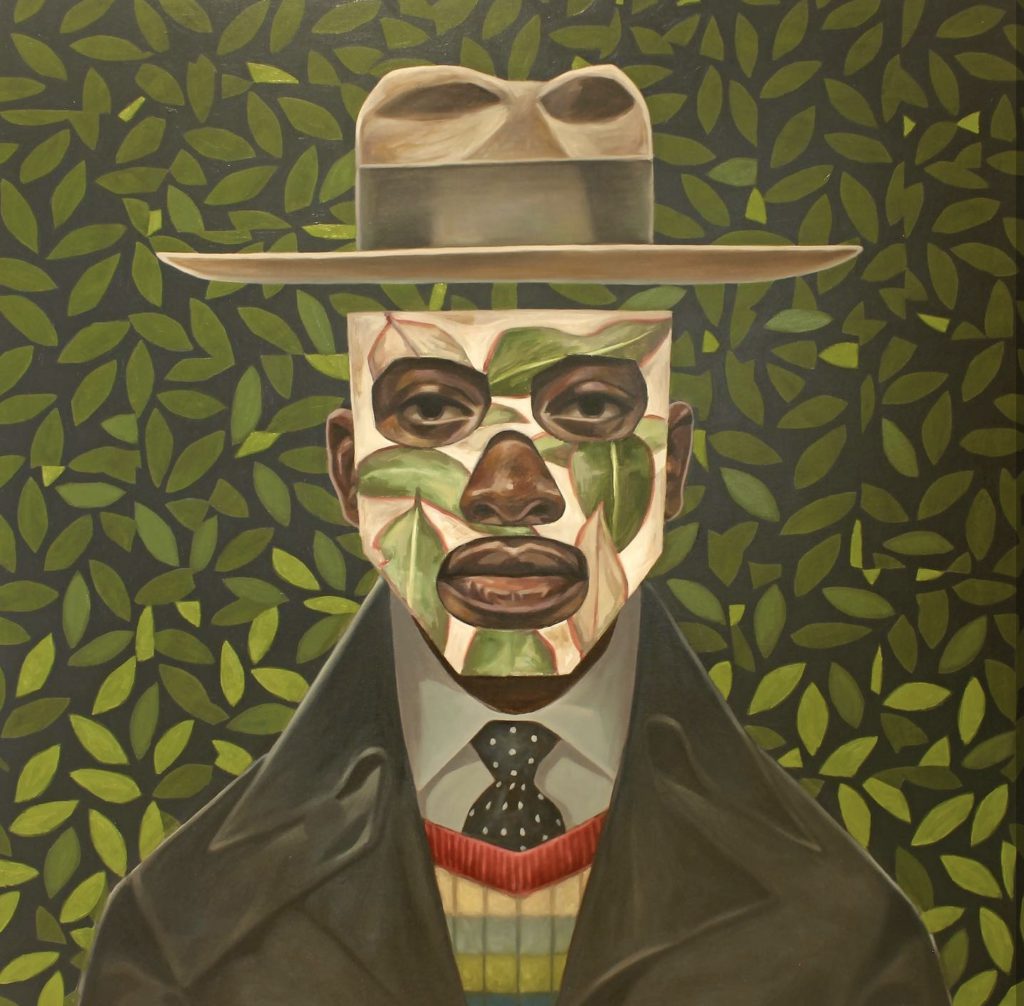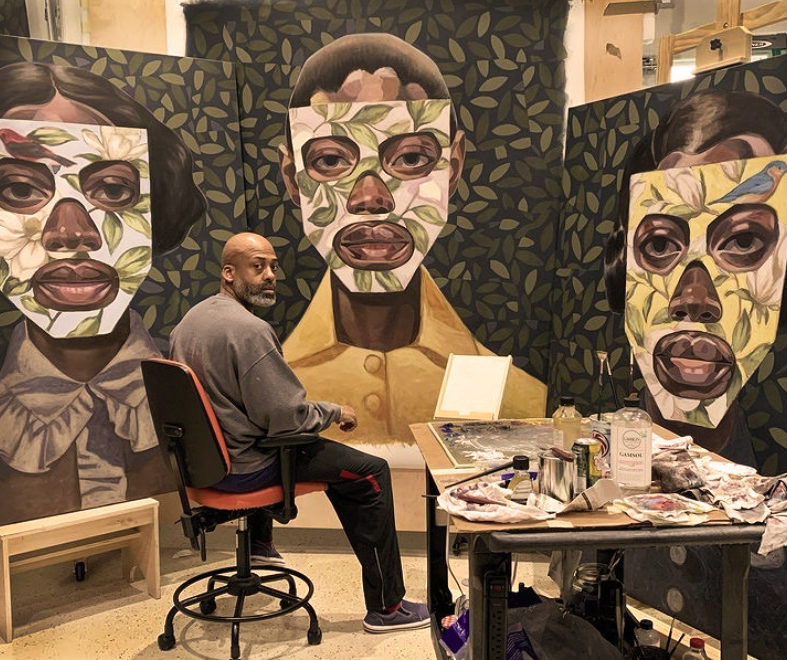Introduction by Jason Jules
At first glance you might be forgiven for mistaking Ronald Jackson for a portrait painter. However, on closer inspection it becomes evident that these faces, many looking right back at you, their gaze trained on your every move, are reflections – their faces etched with emotions, stories and memories that echo, trigger and amplify our own emotions and stories. They’re an invitation to connect, giving us pause to see ourselves in each others eyes. They allow us recognize that the tragedies, dreams and triumphs of others are not unlike our own. For a gallery space to be populated by black and brown figures is rare. And it’s made all the more distinct by the artists’ resistance to urbanization. In part this is due to his own background – growing up on a farm of the Arkansas Delta as part of a community of black landowners, his parents political activists.It referencing a time before the great migration north also conveys to the viewer a sense of legacy, of a generational connection to a rural past. It instils in us the notion that, like the artist himself and the figures in his work, we need not be defined or feel limited by our current environment. They say the best portrait artists allow us to look into the soul of their subjects. If anything, Jackson’s work is the inverse of the classic traditions of portraiture, causing us to enter into a dialogue with our own internal and possibly unresolvable contradictions. Quietly igniting the deepest introspection, it’s ultimately our own soul that Jackson work gives us a window too.
Q&A with Ronald Jackson
Location:
I was born and raised in the Arkansas Delta, the fertile farming region of Eastern Arkansas along the Mississippi River.I am currently residing in Fredericksburg Virginia. I settled here during the last few years of my military career, where I then worked in the greater Washington D.C. area.
How long have you been painting?
I was introduced to painting in college back in 1989. However, it was 2005 when I moved from drawing to painting. Besides the one class in college, it was completely a self-taught effort.
First 3 words that come to mind when you discuss your work:Mysteries, Stories, Humanity…
Why you? Why your art?
Why me? I don’t know! I believe that we all have something to offer that can enrich someone else’s life. I tell my kids to identify a specific skill set that could benefit someone in their community. If there was someone that needed help with their car, their computer, their fitness, their taxes… there should be someone in the community with the specific skill set to advise or assist their neighbor.My art has been a tool that first began to guide me down a path of self-discovery. Secondly, I have found that my art, in many ways, has connected emotionally with people… encouraging introspective evaluations and hopefully elevating the value of others.
The more you know the more you suffer, what does this mean to you (if anything)?
I think this saying is referenced from a biblical passage. Without trying to suggest a biblical interpretation, I personally think it speaks to having a perspective on life. I think it speaks to the contrast of the idealist and the realist. The idealist sees things according to how things should be and the realist focused on how things are. I see myself as being somewhat of an idealist through my artwork, wishing that all people are given the benefit of equal humanity depict their differences. Sometimes facing the honest realities of life can discourage or frustrate this desire. But as an artist, I feel it very rewarding when people recognize the beauty of inclusiveness and humanity for all people.

Color is an essential part of what you do, why?
Color is an element of life that can make the mundane exciting. Whether subtle or bold, vibrant or muted, it speaks to who we are. When communicating with imagery, color is one of the tools that can be used to build narrative, suggest personality, and display emotion. I do not consider myself a strong colorist and many times I downplay the use of color. But being a fan of “magical realism”, my focus is primarily on the mood of my work, and this focus dictates how and when I use color.
More on Ronald Jackson via his website https://www.ronaldjacksonartworks.com/ & the premiere issue of No Chaser (Rebirth Of The Rebellious Spirit) coming soon.






